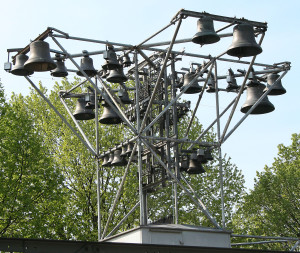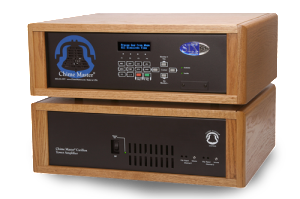Today’s electronic carillons provide an incredible range of bell sounds that rival bronze bells and peals, but are available at a fraction of the cost and are Made in the USA!
History of Carillons

Modern Carillons Play Hymns, Tolls, Songs and Tributes
Today’s units have evolved into very small and easy to use pieces of equipment similar to other sound equipment or computer apps. They need no large storage space and fit easily on a desk, table or in a closet. Unlike the original instruments, electronic carillons are driven by electronic circuitry and are programmable to play hundreds of arrangements, songs, hymns, tolls, and tributes all at the push of a button.
Carillons are replacing original, heavy cast bronze bells in many churches, universities and institutions as substitutes for renovations to towers and bell ringing equipment. Without having prior knowledge of a carillon installation, most people cannot discern the difference between the sounds of an electronic carillon from those of cast bronze church bells. The only clue is the the wide musical assortment that plays through loudspeakers strategically mounted inside existing bell towers. In most cases, the speakers are not visible to the public.
Ease of Use Created Huge Increases in Popularity


